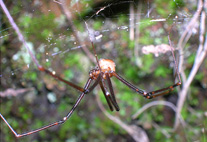Abstract
Fishes normally restricted to inland waters are valuable model systems for historical biogeography, inter alia, because of their limited dispersal abilities and concordance with the distribution patterns of other freshwater taxa (Zogaris et al. 2009). The comparison of fish species assemblages has been the major biogeographical tool for delineating African aquatic ecoregions as the fossil record is often meagre and merely offers complementary information. This is, for example, the case for the Zambezian and Congolian ichthyofaunal provinces, which display substantial contemporary fish diversity (Stewart 2001). Between both regions lies the Bangweulu-Mweru ecoregion (sensu Scott 2005), known for its high percentage of endemicity. Although hydrographically belonging to the Congo Basin, the Bangweulu-Mweru ecoregion has a high affinity with the Zambezi province (Scott 2005), due to historical river connections (Tweddle 2010). Studies comparing the Zambezi and Congo ichthyofaunal provinces are rare and hampered by lack of data from the Congo Basin. The latter harbours more than 1250 fish species (Snoeks et al. 2011) while in the Zambezi, only 120 freshwater fishes are found (Tweddle 2010). Indeed, species richness declines in all major African teleost families from the Congo Basin southwards, riverine haplochromine cichlids forming a notable exception to this rule (Joyce et al. 2005). Although it was hypothesized by Tweddle (2010) that the origin of many Zambezian fish species is in the Congo Basin, the haplochromines Serranochromis Regan, Sargochromis Regan, Pharyngochromis Greenwood and Chetia Trewavas, together forming the serranochromines, have their centre of diversity in the rivers of the Zambezian ichthyofaunal province (Joyce et al. 2005). Therefore, the biogeographical history of Cichlidae across the Zambezi- Congo watershed is not only key to cichlid biogeography on an African scale, but also complementary to biogeography of all other teleosts in the region. Yet, colonisation and speciation patterns are difficult to unravel due to complex hydrological history (Katongo et al. 2007; Schwarzer et al. 2012).
References
Barson, M., Přikrylová, I., Vanhove, M.P.M. & Huyse, T. (2010) Parasite hybridization in African Macrogyrodactylus spp. (Monogenea, Platyhelminthes) signals historical host distribution. Parasitology, 137(10), 1585–1595. http://dx.doi.org/10.1017/S0031182010000302
Blais, J., Rico, C., van Oosterhout, C., Cable, J., Turner, G. F. & Bernatchez, L. (2007) MHC adaptive divergence between closely related and sympatric African cichlids. PLoS ONE, 2(8), e734. http://dx.doi.org/10.1371/journal.pone.0000734
Douëllou, L. (1993) Monogeneans of the genus Cichlidogyrus Paperna, 1960 (Dactylogyridae: Ancyrocephalinae) from cichlid fishes of Lake Kariba (Zimbabwe) with descriptions of five new species. Systematic Parasitology, 25, 159–186. http://dx.doi.org/10.1007/BF00007007
Gillardin, C., Vanhove, M.P.M., Pariselle, A., Huyse, T.& Volckaert, F.A.M. (2012) Ancyrocephalidae (Monogenea) of Lake Tanganyika: II: Description of the first Cichlidogyrus spp. parasites from Tropheini fish hosts (Teleostei, Cichlidae). Parasitology Research, 110(1), 305–313. http://dx.doi.org/10.1007/s00436-011-2490-5
Joyce, D.A., Lunt, D.H., Bills, R., Turner G.F., Katongo, C., Duftner, N., Sturmbauer, C. & Seehausen, O. (2005) An extant cichlid radiation emerged in an extinct Pleistocene lake. Nature, 435, 90–95. http://dx.doi.org/10.1038/nature03489
Katongo, C., Koblmüller, S., Duftner, N., Mumba, L. & Sturmbauer, C. (2007) Evolutionary history and biogeographic affinities of the serranochromine cichlids in Zambian rivers. Molecular Phylogenetics and Evolution, 45, 326–338. http://dx.doi.org/10.1016/j.ympev.2007.02.011
Muterezi Bukinga, F., Vanhove, M.P.M., Van Steenberge, M. & Pariselle, A. (2012) Ancyrocephalidae (Monogenea) of Lake Tanganyika: III: Cichlidogyrus infecting the world’s biggest cichlid and the non-endemic tribes Haplochromini, Oreochromini and Tylochromini (Teleostei, Cichlidae). Parasitology Research, 111(5), 2049–2061. http://dx.doi.org/10.1007/s00436-012-3052-1
Paperna, I. (1960) Studies on monogenetic trematodes in Israel. 2 Monogenetic trematodes of cichlids. Bamidgeh, Bulletin of Fish Culture in Israel, 12, 20–33.
Pariselle, A., Boeger, W.A., Snoeks, J., Bilong Bilong, C.F., Morand, S. & Vanhove, M.P.M. (2011) The monogenean parasite fauna of cichlids: a potential tool for host biogeography. International Journal of Evolutionary Biology, 2011, 471480. http://dx.doi.org/10.4061/2011/471480
Pariselle, A. & Euzet, L. (1994) Three new species of Cichlidogyrus Paperna, 1960 (Monogenea, Ancyrocephalidae) parasitic on Tylochromis jentinki (Steindachner, 1895) (Pisces, Cichlidae) in West Africa. Systematic Parasitology, 29, 229–234.
Pariselle, A. & Euzet, L. (2009) Systematic revision of dactylogyridean parasites (Monogenea) from cichlid fishes in Africa, the Levant and Madagascar. Zoosystema, 31, 849–898. http://dx.doi.org/10.5252/z2009n4a6
Schwarzer, J., Swartz, E.R., Vreven, E., Snoeks, J., Cotterill, F.P.D., Misof, B. & Schliewen, U.K. (2012) Repeated trans-watershed hybridization among haplochromine cichlids (Cichlidae) was triggered by Neogene landscape evolution. Proceedings of the Royal Society B Biological Sciences, 279(1746), 4389–4398.
Scott, L. (2005) Bangweulu-Mweru. In: Thieme, M.L., Abell, R., Stiassny, M.L.J.S., Skelton, P., Burgess, N., Lehner, B., Dinerstein, E., Olson, D., Teugels, G.G. & Kamdem-Toham, A. (Eds), Freshwater ecoregions of Africa and Madagascar: a conservation assessment. Island Press (World Wildlife Fund Ecoregion Assessments), Washington, D.C., pp. 185–186.
Snoeks, J. & Hanssens, M. (2004) Identification guidelines to the other non-mbuna. In: Snoeks, J. (Ed), The cichlid diversity of Lake Malawi/Nyasa/Niassa: identification, distribution and taxonomy. Cichlid Press, El Paso, pp. 266–310.
Snoeks, J., Harrison, I. & Stiassny, M. (2011) The status and distribution of freshwater fishes. In: Darwall, W., Allen, D., Holland, R., Harrison, I. & Brooks, E. (Eds), The diversity of life in African freshwaters: under water, under threat. An analysis of the status and distribution of freshwater species throughout mainland Africa. IUCN, Cambridge and Gland, pp. 42–91.
Stewart, K.M. (2001) The freshwater fish of Neogene Africa (Miocene–Pleistocene): systematics and biogeography. Fish and Fisheries, 2, 177–230. http://dx.doi.org/10.1046/j.1467-2960.2001.00052.x
Tweddle, D. (2010) Overview of the Zambezi River System: its history, fish fauna, fisheries, and conservation. Aquatic Ecosystem Health & Management, 13, 224–240. http://dx.doi.org/10.1080/14634988.2010.507035
Vanhove, M.P.M., Volckaert, F.A.M. & Pariselle, A. (2011) Ancyrocephalidae (Monogenea) of Lake Tanganyika: I: Four new species of Cichlidogyrus from Ophthalmotilapia ventralis (Teleostei, Cichlidae), the first record of this parasite family in the basin. Zoologia (Curitiba, Impresso), 28(2), 253–263.
Vignon, M., Pariselle, A. & Vanhove, M.P.M. (2011) Modularity in attachment organs of African Cichlidogyrus (Platyhelminthes, Monogenea, Ancyrocephalidae) reflects phylogeny rather than host specificity or geographic distribution. Biological Journal of the Linnean Society, 102(3), 694–706. http://dx.doi.org/10.1111/j.1095-8312.2010.01607.x
Zogaris, S., Economou, A.N. & Dimopoulos, P. (2009) Ecoregions in the Southern Balkans: should their boundaries be revised? Environmental Management, 43, 682–697. http://dx.doi.org/10.1007/s00267-008-9243-y

